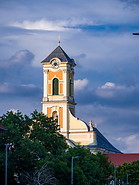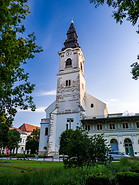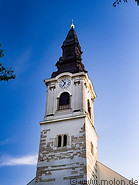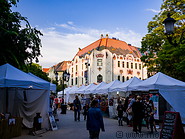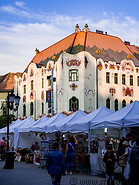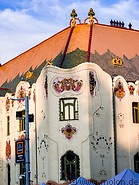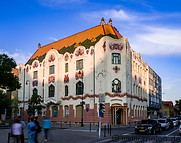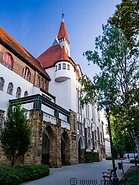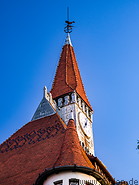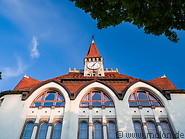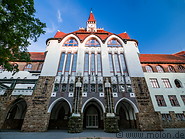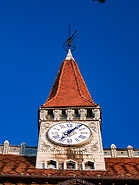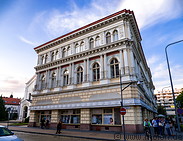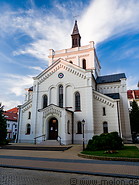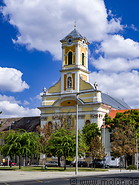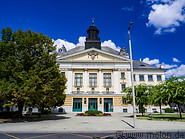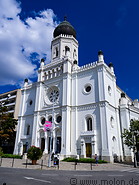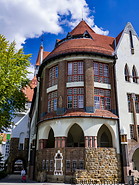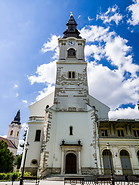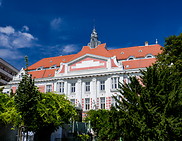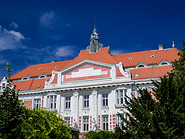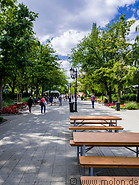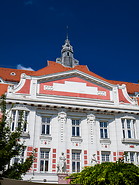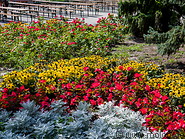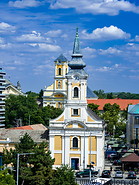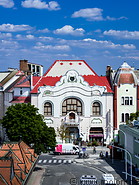Kecskemét is a small city with 110000 inhabitants located in the plains of central Hungary, 90 km southeast of Budapest.
inhabitants located in the plains of central Hungary, 90 km southeast of Budapest.
The area around Kecskemét has been settled for at least 5000 years. The city was however first mentioned in 1368 by king Louis I of Hungary and later grew as a trading centre. After the 19th century agriculture and the wine industry contributed to the wealth of the city and many Art Nouveau buildings were built.
Kecskemét has a number of interesting buildings and some interesting architecture. These include several churches, the town hall, the Art Nouveau Cifra palace and other buildings. The house of science and technology is a Moorish-style building which previously was a synagogue.
How to get to Kecskemét
The closest airport is the one in Budapest. Kecskemét also has a train station and can be reached by bus or car.
Accommodation
Kecskemét has several accomodation options, bookable via the international booking portals.
 inhabitants located in the plains of central Hungary, 90 km southeast of Budapest.
inhabitants located in the plains of central Hungary, 90 km southeast of Budapest.
The area around Kecskemét has been settled for at least 5000 years. The city was however first mentioned in 1368 by king Louis I of Hungary and later grew as a trading centre. After the 19th century agriculture and the wine industry contributed to the wealth of the city and many Art Nouveau buildings were built.
Kecskemét has a number of interesting buildings and some interesting architecture. These include several churches, the town hall, the Art Nouveau Cifra palace and other buildings. The house of science and technology is a Moorish-style building which previously was a synagogue.
How to get to Kecskemét
The closest airport is the one in Budapest. Kecskemét also has a train station and can be reached by bus or car.
Accommodation
Kecskemét has several accomodation options, bookable via the international booking portals.

